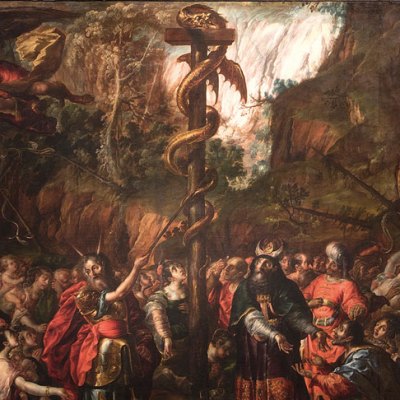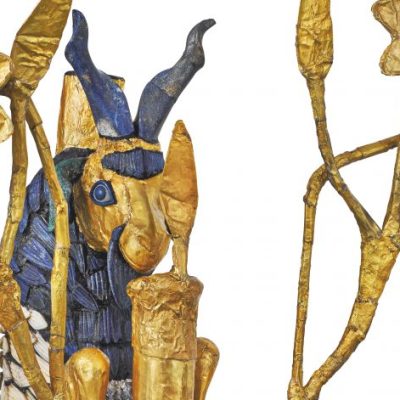It is with a whiff of mischief that ‘Perfume: A Sensory Journey Through Contemporary Scent’ is on display throughout the summer. The 10 different scents exhibited at Somerset House mingle with visitors’ perspiration, and pollution from the Strand. These ancillary odours actually reiterate the exhibition’s concerns, because ‘Perfume’ is a rare opportunity to engage with the olfactory and to question its very purpose.
The exhibition’s 10 perfumes are showcased as 10 individual installations, with scents enclosed in sachets or discharged from vents. Sensory triggers are included in the spaces: a projection of fabric floating in the breeze complements the unmistakable smell of lilacs; rows of confessionals are the tactile setting for a perfume that evokes the aromas of frankincense from a swinging censer.
© Ori Gersht 2017. Courtesy Ben Brown Fine Arts
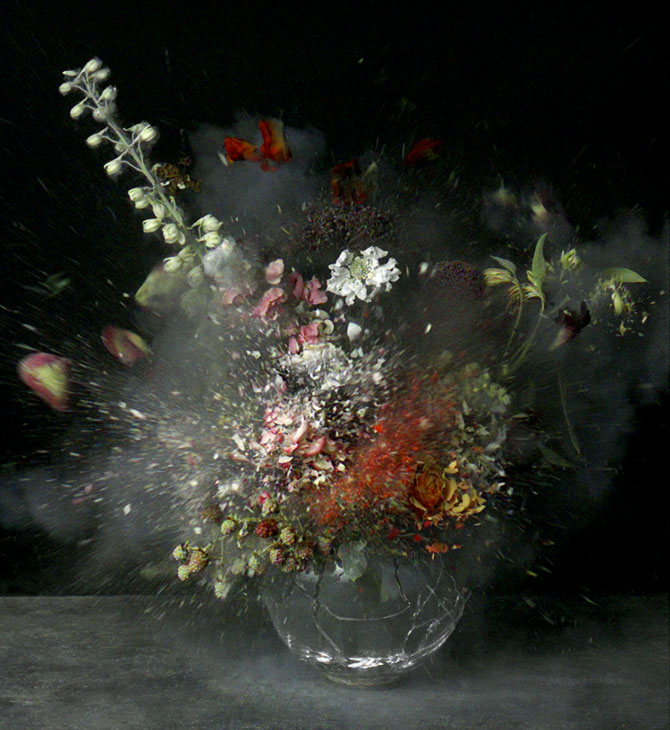
‘Perfume’ is an exhibition whose visual elements are a means to heighten the leading medium of odour. The display is unusual in its medium-specificity, yet it is remarkable how comfortably the perfumes fit in an exhibition space – and this may not just be credited to the curator Claire Catterall and co-curator Lizzie Ostrom.
Historically, artists have experimented with the sense of smell, notably avant-gardists including the Surrealists. The curators make reference to this in the first room, with the inclusion of Schiaparelli’s Shocking – a perfume from 1937 intended to smell like shocking pink. The bottle, designed by Leonor Fini, is of a female torso, where the head is replaced by a bouquet of flowers, perhaps embodying the Surrealist Sheila Legge, who in 1936 encased her head entirely in roses for a perfumed performance in Trafalgar Square. Surreal scents reappeared in the 1938 International Surrealist Exhibition, where fumes from burning coal were expelled from a brazier, and brewing Brazilian coffee assaulted the nose, subverting the gallery’s conventionally clinical atmosphere.
Iris © Givaudan
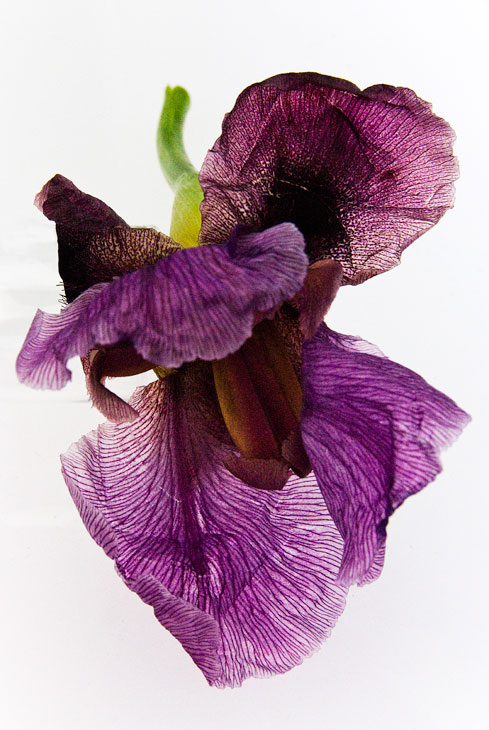
In recent years, various institutions and curators have placed perfume at centre stage. Paris now plays host to several perfume museums: at Le Grand Musée du Parfum, which opened earlier this year, visitors can sample the history of perfume through their noses; whilst certain Fragonard branches include displays about the development of perfume production. This approach is echoed in the exhibition’s first room, where the most iconic 20th-century scents are showcased, such as Chanel N°5 and ck one.
But while ‘Perfume’ acknowledges the medium’s history, the exhibition’s accompanying text reads like a manifesto, for the 10 scents that make up the main display are truly avant-garde. The exhibition distances itself from perfume’s traditional remit to embellish and allure; Killian Wells’s Dark Ride epitomises this, as his perfume is a distillation of a theme park’s log flume. Perfumes now bottle samples of the contemporary world, and this can include the smell of chlorinated water. It therefore throws into question whether perfume has to be wearable at all, and in this distancing, it aligns itself closer to conceptual art.
Laboratoire Kiéber. © Givaudan
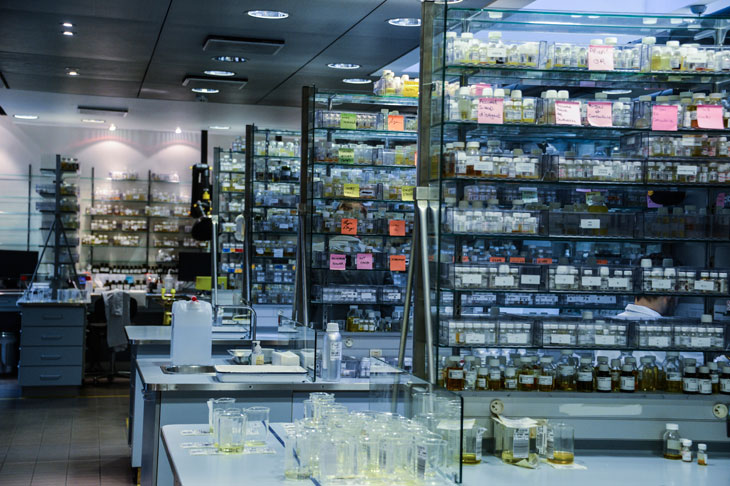
Engaging the nose instead of the eye is an exceptional pleasure, and in this unfamiliar territory, the mind rummages to find the words to articulate what the untrained nose smells. The exhibition is helpful in remedying this by providing cards for visitors to jot down notes on the smells and impressions that the perfumes evoke. But it also highlights the need for the language of odour to be integrated more within standard vocabulary.
Scented postcards are available to purchase in the gift shop, where Antoine Lie’s Sécrétions Magnifiques, a fleshly fragrance emulating smells of milk, blood, sweat, semen and saliva, can either be retained as an exhibition souvenir, or posted to an unsuspecting recipient. As the medium of odour develops and generates new concepts, art institutions are suitable places to showcase and record this progress. Perhaps then, we can look forward to more olfactory exhibitions to shock, delight, and enchant.
Sécrétions Magnifiques by Antoine Lie. Courtesy of Etat Libre d’Orange
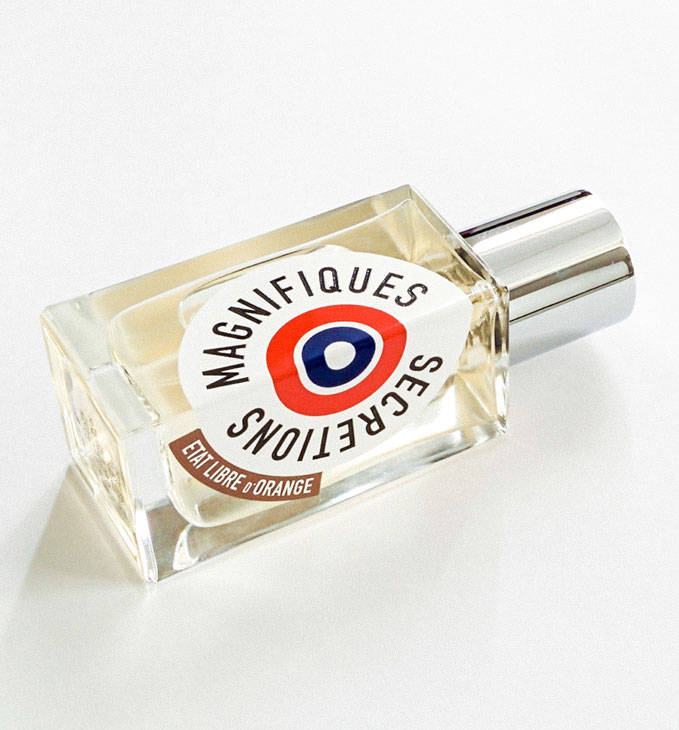
‘Perfume: a sensory journey through contemporary scent’ is at Somerset House, London, until 23 September 2017.

